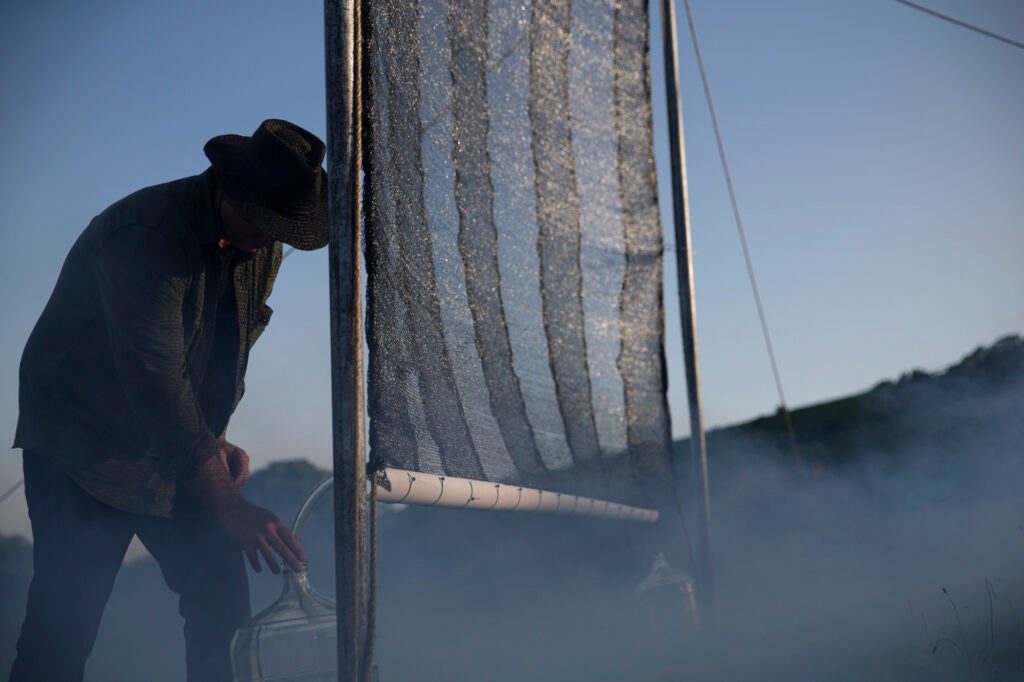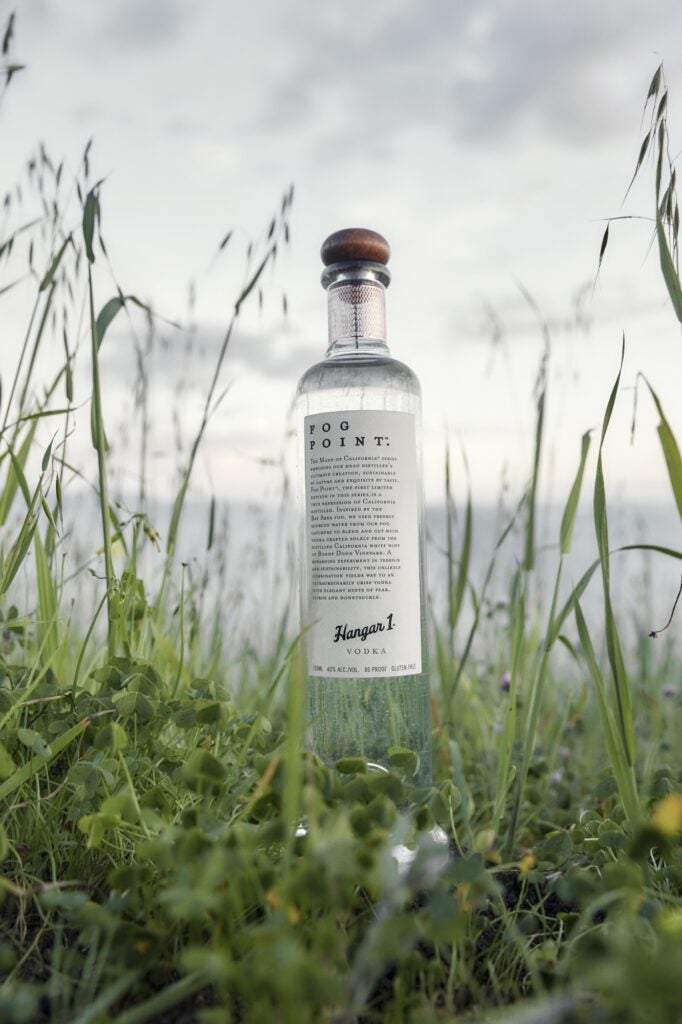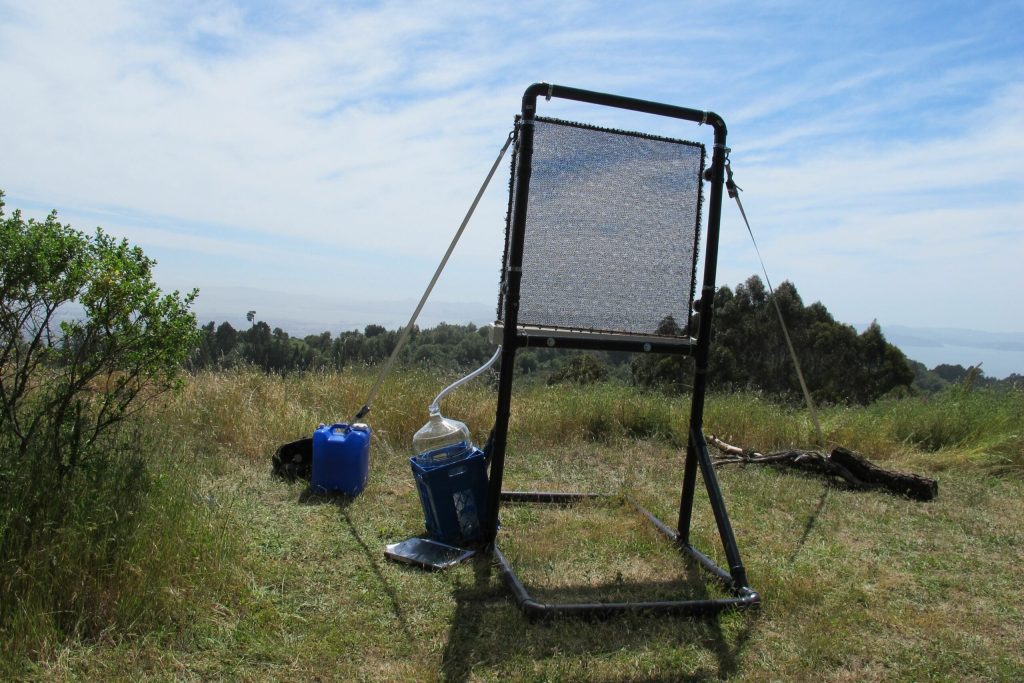
Today Hangar One announced a limited-edition vodka made with water harvested from Bay Area fog, most of it collected at the base of the iconic Sutro Tower that stands atop Twin Peaks in San Francisco. Since 60 percent of the average spirit is water, that makes fog the primary ingredient in this bottle.
The alcohol is distilled from nearby Bonny Doon’s biodynamically grown 2012 Le Cigare Blanc wine, 1,000 cases of which were dumped from bottles and concentrated into a base spirit. Regular Hangar One vodka consists of a grain vodka with a splash of grape-distilled spirit added to it, but this special edition is distilled entirely from grapes, which makes it certifiably gluten-free, should you want to spend $125 on it.
The water was collected in a fog catcher, by a volunteer for Fog Quest, a non-profit organization dedicated to water projects for rural communities in developing countries. His name (wait for it) is Chris Fogliatti.
Fogliatti assembled meter-square fog collectors at several sites. It turns out that ocean fog (created by warm air blowing over cold water) is ideal, while low-lying radiation fog (from cold air blowing over warm soil) isn’t very easily collected on the fog catchers, which are made of two layers of easily-accessible polyethylene shade cloth stretched across a U-shaped PVC pipe configuration like a homebuilt backyard soccer goal.
“I think fog nets are now where solar panels were during the Jimmy Carter administration,” he says, referring to their more practical future uses rather than proof-of-concept ones in the short term. For now, despite the California-vacation-spoiling levels of Bay Area fog, the nets haven’t been proven to be a fix to California’s drought.

In this very small experimental situation (as opposed to the practical model that could be deployed in dry climates such as Guatemala and Ethiopia), it required eight small fog catchers five months to collect just over 1,200 liters of water to be used in the 2,400 bottles of vodka eventually produced. This is during fog’s off season (fog has a season, FYI), but Fogliatti would expect the rate of collection to triple to quintuple in the foggiest months, between late June and September.
The profits from the fodka will go towards Fog Quest’s California sustainable water initiatives. The actual fog water used was boiled after collection to kill any beasties, and filtered through carbon before hitting the bottle, but in a future practical situation the water might be used to water plants for landscaping, or to help commercial plantings require less irrigation.
For people who want to support water conservation projects it’s an imbibable reward for your donation, and for others it’s sweet, drinkable vengeance against the so-called “summer” weather in San Francisco that caused you to purchase that horrid souvenir cable car sweatshirt.









